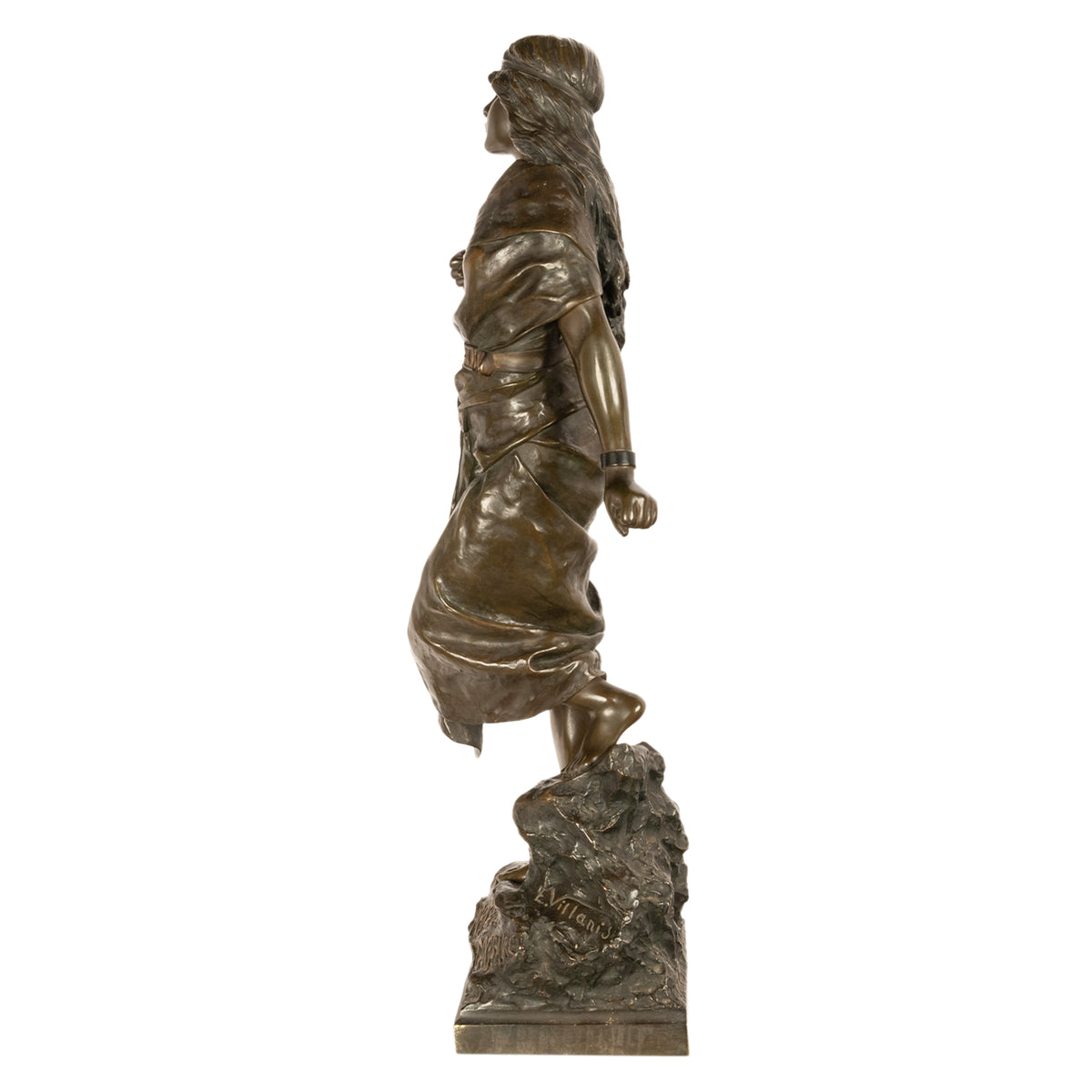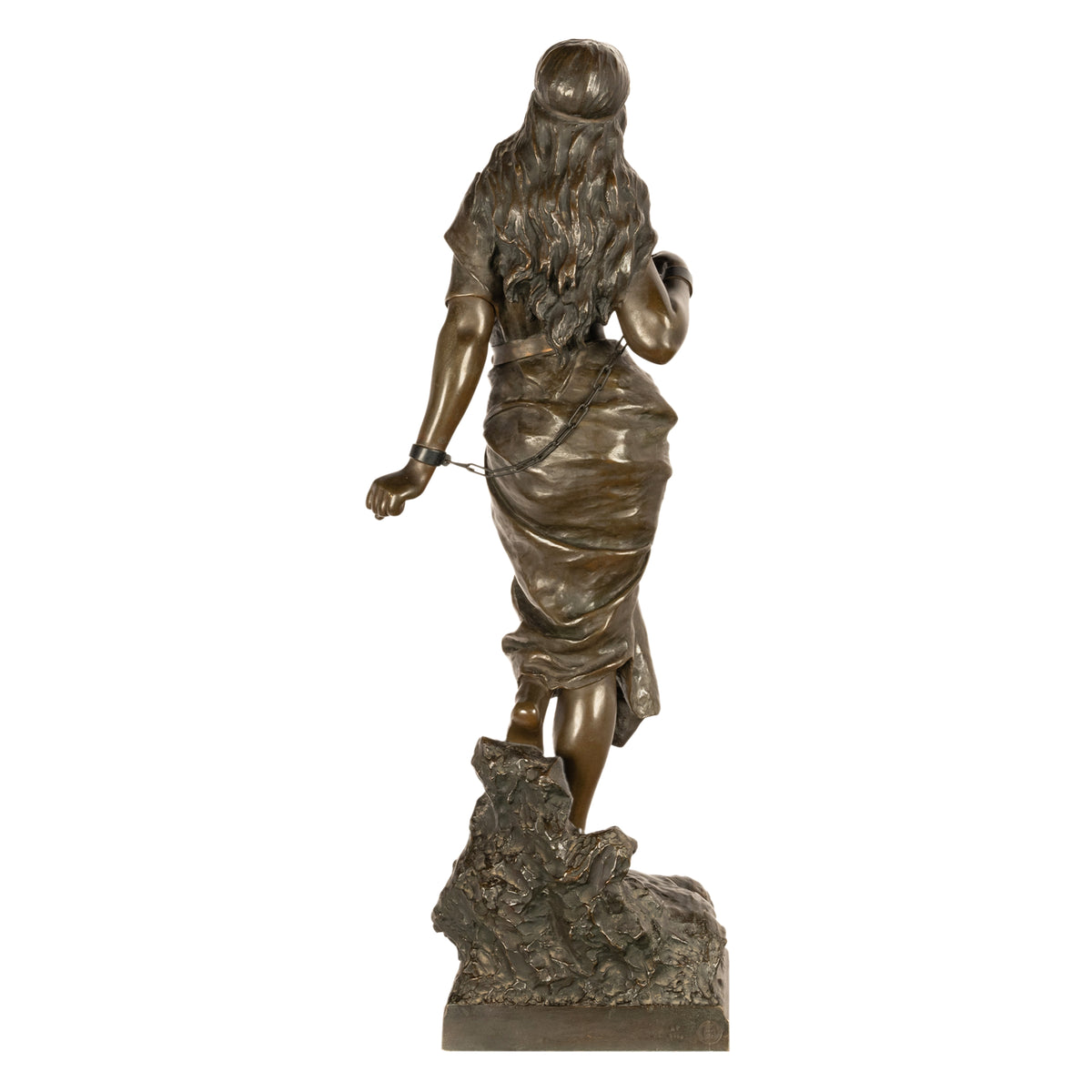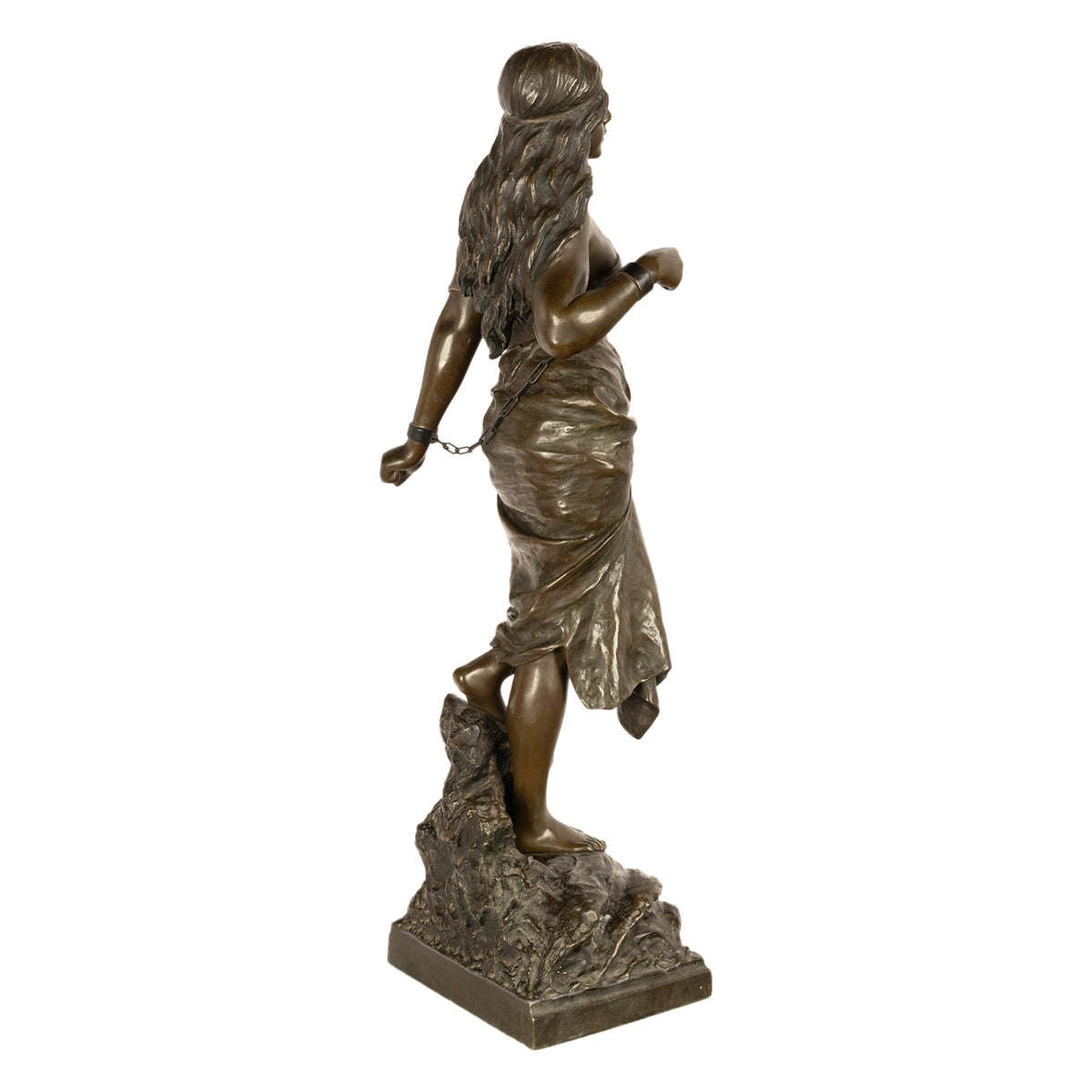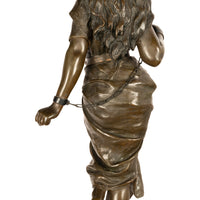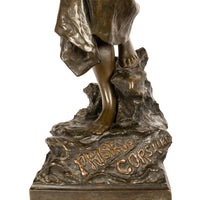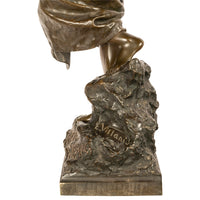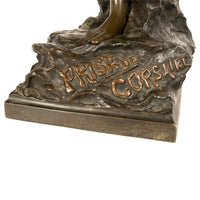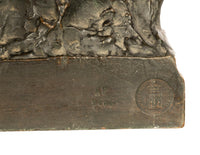Antique French Art Nouveau Bronze Figure Statue Sculpture "Prise de Corsaire" Emmanuel Villanis 1900
- Regular
- $ 6,200
- Sale
- $ 6,200
- Regular
- Unit Price
- per
A fine antique large French Art Nouveau Bronze Figural Sculpture, titled "Prise de Corsaire" by Emmanuel Villanis (1858-1914), circa 1900.
This very fine half life size bronze depicts a beautiful maiden chained and standing on a rocky outcrop, the bronze titled, "Prise de Corsaire" (The Pirate's Prize) and signed "Villanis" to the lower right side. The bronze having the foundry stamp to the rear, "Société des Bronzes," and stamped "AP 2250."
The bronze is in excellent condition, fabulous original patina, ready to take pride of place in your home. Size is very large, around half life size at 34" tall, unpacked weight is 51 lbs.
Artist's Biography
Emmanuel Villanis, born as Barthélémi Felix Victor Emmanuel Villanis, on December 12, 1858, in Lille, France, was a prominent sculptor renowned for his exquisite depictions of feminine beauty and his contribution to the artistic landscape of the late 19th and early 20th centuries.
Born to Piedmontese parents, Villanis's early life was marked by cultural diversity. His family relocated to Italy following the establishment of the Kingdom of Italy under the leadership of Victor Emmanuel II, exposing him to the rich artistic heritage of the Italian peninsula. It was in Italy that he embarked on his artistic journey, studying the craft of sculpture under the tutelage of Odoardo Tabacchi.
Villanis made his first significant artistic appearance in 1881 when he exhibited his plaster busts in Milan. This early display of talent was a harbinger of his future success. Four years later, in 1885, he presented his works at the prestigious Brera Academy in Milan, further solidifying his reputation as a gifted sculptor.
In 1886, Emmanuel Villanis returned to France, a decision that would shape the trajectory of his career. That same year marked his debut at the Salon of the Société des Artistes Français, a renowned platform for artists of the time. This marked the beginning of his professional journey in the heart of the Parisian art scene.
It was also during this period that Villanis's personal life took an interesting turn. In 1887, he married Jeanne Georgette Fournier Pelletier, a Parisian woman. This marriage, in accordance with the laws of the time, paved the way for his French naturalization. However, an initial lack of funds prevented him from completing the necessary paperwork. It wasn't until 1903 that he finally achieved naturalization, becoming an official French citizen.
Life, however, had its twists and turns for Villanis, as his marriage to Jeanne began to unravel shortly after the naturalization. In 1904, he entered into a new union, this time marrying Johanna Maria Magdalena Huinck, a Dutch woman. This change in his personal life did not deter him from his artistic pursuits.
Emmanuel Villanis's artistic contributions primarily revolved around sculptures, with a particular emphasis on the portrayal of women. His work drew inspiration from many sources, including major historical figures, Biblical personalities, mythology, and music. His sculptures were marked by meticulous attention to detail, great texture juxtaposing a soft and almost dreamy rendering of the figure and an overall sense of grace and elegance.
Notably, Villanis found inspiration in the world of music, creating portraits of renowned figures such as the singer Adelina Patti and composers like Jules Massenet and Camille Saint-Saëns. His sculptures served as a testament to the fusion of art and music, capturing the essence of these iconic personalities.
His dedication to his craft led him to exhibit at the Salons between 1886 and 1910, where he showcased a range of sculptures, including plaster and terracotta statues, with an occasional foray into more complex subjects. In 1889, he adopted the name Emmanuele Villani and exhibited as an Italian, earning a Mention Honorable for his efforts.
Over the course of his career, Emmanuel Villanis sculpted more than 300 sculptures, with the majority produced by the Société des Bronzes de Paris. These works were characterized by their varying sizes, crafted from materials like bronze, pewter, or spelter, and frequently adorned with multi-colored patinations.
Villanis's artistic legacy endures through his remarkable body of work that is broadly collected and can be found in collections around the world. His contributions to the world of sculpture, particularly his ability to capture the essence of beauty and femininity, continue to be celebrated and admired by art enthusiasts and connoisseurs.
Imperial
ches high × ches wide × ches deep
Metric
high × wide x deep
Displayed rates are for shipping in the Continental U.S. and Canada. For other locations, kindly contact us and we will provide the most competitive shipping price available. All shipments are professionally packed and shipped insured with full tracking capabilities. Customers are also welcome to collect their items from our warehouses or arrange their own shipping.



